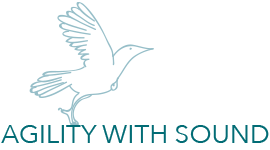Formal writing is simple in principle, but complex and cognitively demanding in practice. I saw little point in making Agility with Sound Digital essentially the same as other writing programmes. Because I own the copyright on a wide range of short stories, I had the opportunity to do something quite different.
I need to stress that this is as much about building comprehension proficiency as it is about writing. They belong together. Writing is about much more than the format of a sentence, or a paragraph, or an essay. The larger part is research, gathering information, evaluating what is relevant to your thesis, finding pertinent examples, planning an argument and so on. That requires advanced comprehension of the sources, and in this case of the text.
I have also made it structured, building the skills explicitly, systematically, and cumulatively, from simple to complex, breaking the writing process down.
A good essay has an introduction, explaining necessary background and introducing the thesis. This is followed by body paragraphs in a logical order, flowing on from each other, and a conclusion.
A good paragraph begins with a lead/topic/introductory/headline sentence. That sentence should embrace both a specific topic and a specific idea, to be explored in the rest of the paragraph. Then comes factual stuff to support that lead sentence, evidence, relevant examples, perhaps even a quotation. The next bit explains how all this supports the main thesis. Finally, the summary sentence wraps it all up, and where possible, presents a lead into the next paragraph.
The sentences should flow, with one thought seamlessly leading to the next. The writer’s train of thought should be clear, with the link between one thought and the next made explicit with transition words and other means of making the link. Sentence types should vary, chosen for interest, readability, and for the impact the writer wants to make. Words should not be repeated unnecessarily within a paragraph. In most cases there are many alternatives to choose from, if only the students knew them. The whole should be clear, concise, and correct.
All that, at once, is a huge ask. A structured approach demands that it should be broken down, approached step by step, starting with the easier elements. I have done masses of research about where and how it breaks down. There is a lot out there, some free sites on the internet, some research articles that are not free. Two issues stand out. The first is holding on to the principle that a paragraph is about one idea. Too many students attempt too many examples, too much in one paragraph, and lose sight of this basic principle. I have seen many tutors of post-graduate law and English students complaining about how many of their students fall into this trap. The solution is to keep the paragraphs short and focussed, at least until this principle is firmly established.
The second is the lead sentence. This is both the most important sentence in the paragraph, and much the most difficult to get right. But getting the rest of the paragraph right hinges on this lead sentence. For that reason, I have chosen to provide the lead sentence for the first 50 or 60 assignments. The student can then focus on the easier bits, adding the factual support that follows the lead sentence at Stage 1, and adding in the concluding sentence at stage 2. At both stages, the students focus on employing different sentence types and a range of vocabulary. There should be plenty of discussion at stage 2 about what makes a good lead sentence, and I am providing some resources for the teachers to do this. Understanding this is critically important, and many students need a great deal of help. By stage 3, students are tackling the tricky aspects, writing their own lead sentences, adding the analysis, and using transition techniques.
So, Agility with Sound Digital is not about producing the perfect piece of writing from the beginning. It is about taking students through the process, step by step, systematically and explicitly, beginning with the easier elements and progressing to the trickier parts. It is as much about what to write as how to write it. Becoming a proficient writer takes practice, practice and more practice, developing more and more sophisticated skills along the way.
About comprehension: I am hearing more and more schools expressing concern about their students’ ability to comprehend text. Skilled comprehension does not automatically follow from competent decoding. For some it does, for too many it does not. The scripted comprehension scripts provided for the teacher are one way of addressing this. Writing about reading, and especially peer discussion, is another.

